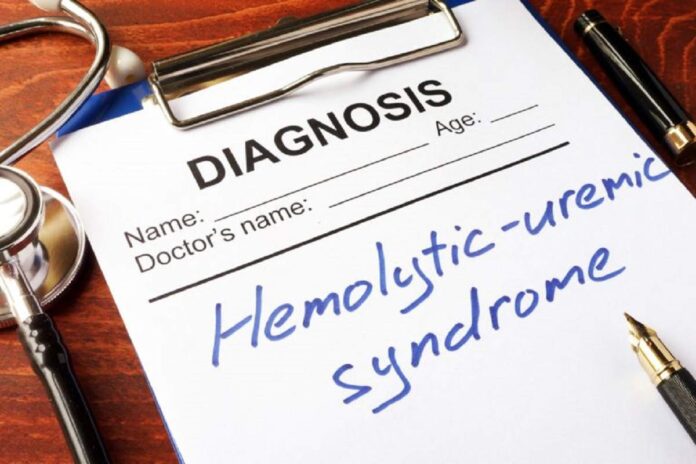Table of Contents
Overview of HUS and TTP
Hemolytic-uremic syndrome (HUS) and thrombotic thrombocytopenic purpura (TTP) are microangiopathic disorders—that is, they are characterized by abnormalities (chiefly blood clots) that occur within the small blood vessels of the body.
Hemolytic anemia results from the fragmentation of the red blood cells when they pass through areas of thrombi (masses or clots) or turbulence in the circulation. Such forces shear the cells in half, producing cell remnants that appear as helmets and other odd shapes when viewed under a microscope. In fact, the diagnosis of HUS-TTP is aided by microscopic examination of the blood for sheared red blood cells.
Causes and Risk Factors for HUS and TTP
Although the exact cause(s) of HUS and TTP are unknown, experts believe that an abnormal, inflammatory reaction within the blood stimulates the deposition of platelet-rich thrombi. It has been observed that a circulating and/or missing factor in the blood perpetuates the process. Therefore, HUS/TTP patients often benefit from treatment that removes the plasma (fluid, non-cellular part of the blood) and replaces it with donor plasma.
Many diseases and conditions have been found to spur the development of HUS and TTP, including:
- Enterohemorrhagic Escherichia coli (EHEC) infection. EHEC is a diarrhea-producing bacterium that has been associated with epidemic outbreaks of HUS in children. This particular bacterium (OH157:H7) has been identified in undercooked meat as well as other foods.
- Pneumococcal pneumonia infection
- AIDS (acquired immunodeficiency syndrome)
- Drugs, for example, oral contraceptives, chemotherapeutic medications (mitomycin C, bleomycin, cisplatinum), immunosuppressive agents used during organ transplantation (cyclosporin, tacrolimus), stroke-preventing drugs (ticlopidine hydrochloride), quinine
- Antiphospholipid antibody syndrome
- Pregnancy and the postpartum period
Signs and Symptoms of HUS and TTP
The general symptoms associated of HUS-TTP are quite variable. Purpura (bleeding into the tissues) sometimes can be seen in the skin, and patients often complain of tiredness due to anemia. Some individuals with TTP may have neurological symptoms and fever.
Children who develop hemorrhagic colitis (colon inflammation and bleeding) due to E.coli may become infected as an isolated incident or as part of a large outbreak (e.g., identifiable exposure to food such as undercooked meat). Bloody diarrhea often occurs 3 to 4 days after exposure, with abdominal pain but usually no fever.
HUS and TTP usually are diagnosed by the combination of low platelets and anemia caused by hemolysis. Other findings may include fever, renal failure, and neurologic abnormalities.
Treatment for HUS and TTP
It is essential to treat HUS and TTP, as the mortality rate without treatment is close to 90 percent.
Treatment involves:
- Plasma exchange with fresh plasma—Plasma should be replaced on a daily basis until the platelet count normalizes—typically after 5 to 15 treatments.
- Plasma exchange with cryosupernatant of plasma—Individuals who are resistant to plasmapheresis (plasma removal and transfusion) with fresh plasma may need this more intense, twice daily regimen with plasma cryosupernatant (plasma derivative).
- Additional medication with vincristine and intravenous gammaglobulins
Relapses are relatively common in people who have had HUS or TTP. Such cases may require another course of treatment. One study reported a relapse risk of 36 percent over a 10-year period. Therefore, patients need to be followed-up indefinitely.
Children with ECHC associated HUS tend to have a self-limited disease and only require supportive care, unless there is severe or persistent disease. Prolonged follow-up in these patients is usually not necessary. Unfortunately, adults with ECHC associated HUS often require full treatment similar to that required by patients who have HUS-TTP unrelated to ECHC.




